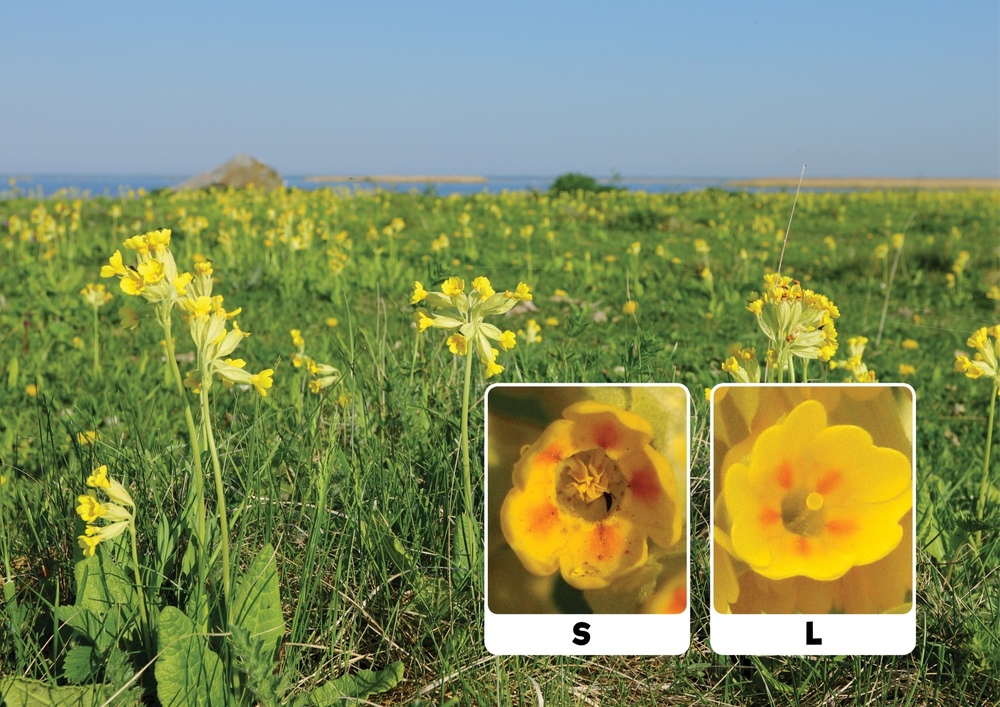Monday, 11 April 2022 Enjoy the nature and help scientists at the same time: UP invites you to the spring cowslips hunting campaign
This spring, Europe is looking for spring cowslips!
Also this spring, Slovenia is joining the action of observing spring cowslips. We invite everyone who likes to spend time in nature and would like to contribute to real scientific research to participate.
The idea of pan-European observation was born to researchers from Estonia who wanted to obtain as much data as possible about the spring cowslip in Estonia. They have taken an approach in which the role of researchers is taken over by amateur naturalists and is therefore called "citizen science". That year, in Estonia, with the help of children and adults who provided data on cowslips, they obtained data on as many as 200,000 plants.
What is it really about?
The idea is simple: we go to nature and find a place where spring cowslips (Primula veris) grow. We take a look at their blossom and send our observations along with some photos via smartphone to the researchers. After the end of flowering, when all the data has been collected, the scientists analyze the data and send feedback to all participants on their findings.
"Participating in this scientific research has proven to be easy and fun, which we don't hear so often," commented Dr. Tsipe Aavik, lead researcher of the Spring Cowslip project. Everyone can participate, as the work is simple and participants do not need additional training, in addition, researchers in Estonia have set up a website through which we can easily enter data. "In Estonia, many families and children took part in this campaign, which we started in 2019." During the pandemic, this action proved particularly welcome, as it encouraged people to spend time in nature. "Why not add a fun activity to a walking in nature, which also benefits scientists?" adds Tsipe Aavik.
Estonian scientists were positively surprised by the great response from citizens. With their help, they obtained important information about the state of the spring cowslip in Estonia and the results were published in the prestigious scientific journal Journal of Ecology. Therefore, they decided to expand the campaign in 2021 to more countries.
What did the research show?
A study coordinated by ecologists from the University of Tartu and the Estonian Nature Fund sought to examine whether drastic changes in the landscape, such as the loss of traditionally managed grasslands, led to deviations in the morphic balance of spring cowslip blossom. The spring cowslip has - like all its relatives, such as the trumpet - blossoms of two shapes: about half of them have blossoms with a short pistil and long anthers (briefly called "S blossom"), and the other half blossoms with a long pistil and short anthers ("L blossom"). Recent research has shown that grass loss can upset the balance in the frequency of S and L blossoms. This has important implications for cowslips as they affect the performance of populations. Data collected so far in Estonia have revealed the predominance of S blossoms over L blossoms. The deviation also turned out to be greater in smaller populations and in those areas where the human population density is higher.

But new questions are opening up. Are similar deviations characteristic of other populations in Europe? What is the actual situation of populations elsewhere in Europe? And so the idea of a pan-European cowslip observation campaign was born. The approach is the same - anyone who would like to add a pebble to the mosaic of this extensive research can join the observation.
The specially designed web platform https://cowslip.science/ now translated into many languages, including Slovenian, and allows easy data upload. In 2022, Belgium, Bulgaria, the Czech Republic, Denmark, Finland, Greece, Croatia, Italy, Ireland, Latvia, Lithuania, Macedonia, Hungary, Germany, the Netherlands, Sweden, Poland, Portugal, Russia, Slovakia, Slovenia, Switzerland, Ukraine and the United Kingdom.
The ConservePlants project, funded by the European Union and bringing together botanists from more than 40 European and other nearby countries, has also contributed to expanding the campaign to many European countries. The head of the ConservePlants project, Živa Fišer from the University of Primorska, says: “The goal of the ConservePlants project is to connect European and other researchers, as well as all others who strive to save endangered plant species with different approaches. The amateur science approach is also becoming increasingly important in the research of serious scientific issues, which has also been shown in the above-mentioned study of the spring cowslip in Estonia. That is why we were happy to join the Estonian colleagues' initiative as part of the ConservePlants project."
In Slovenia, the campaign is coordinated by the Faculty of Mathematics, Natural Sciences and Information Technologies of the University of Primorska and the Botanical Garden of the University of Ljubljana, while the coordinator for Slovenia is Dr. Živa Fišer from the Department of Biodiversity at UP FAMNIT. The campaign is also accompanied by other activities, such as the preparation of educational materials, short videos and promotion through social networks and other media.
More information:
https://cowslip.science/
Dr. Živa Fišer, Local Coordinator for Slovenia, University of Primorska; ziva.fiser@upr.si





